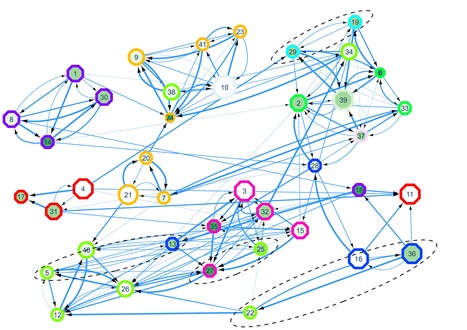Paradowski, M.B., Whitby, N., Czuba, M. & Bródka, P. (2024). Language Learning. DOI: 10.1111/lang.12681
This is the first application in second language acquisition of quantitative Social Network Analysis reconstructing a complete learner network with repeated (three) measurement points. Apart from the empirical contribution showcasing exciting findings from an intensive study-abroad Arabic program, the text can also serve as a primer of centrality metrics, providing in-depth explanation of the most commonly used centrality measures in network science - to the best of our knowledge, the first such 101 in applied linguistics. The materials, dataset, as well as code are all openly available on OSF and IRIS.
Abstract
Using computational Social Network Analysis (SNA), this longitudinal study investigates the development of the interaction network and its influence on the second language (L2) gains of a complete cohort of 41 U.S. sojourners enrolled in a 3-month intensive study-abroad Arabic program in Jordan. Unlike extant research, our study focuses on students’ interactions with alma mater classmates, reconstructing their complete network, tracing the impact of individual students’ positions in the social graph using centrality metrics, and incorporating a developmental perspective with three measurement points. Objective proficiency gains were influenced by predeparture proficiency (negatively), multilingualism, perceived integration of the peer learner group (negatively), and the number of fellow learners speaking to the student. Analyses reveal relatively stable same-gender cliques, but with changes in the patterns and strength of interaction. We also discuss interesting divergent trajectories of centrality metrics, L2 use, and progress; predictors of self-perceived progress across skills; and the interplay of context and gender.
Read the full article at https://onlinelibrary.wiley.com/doi/10.1111/lang.12681



 Your new post is loading...
Your new post is loading...








